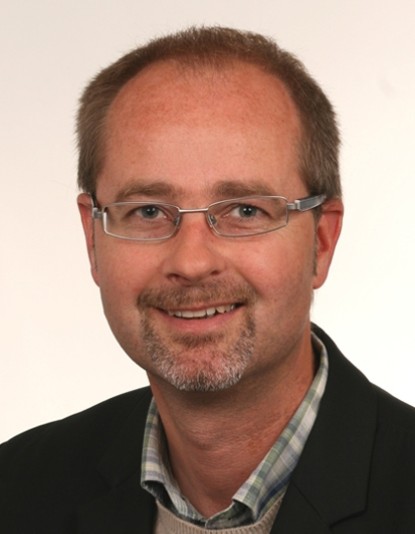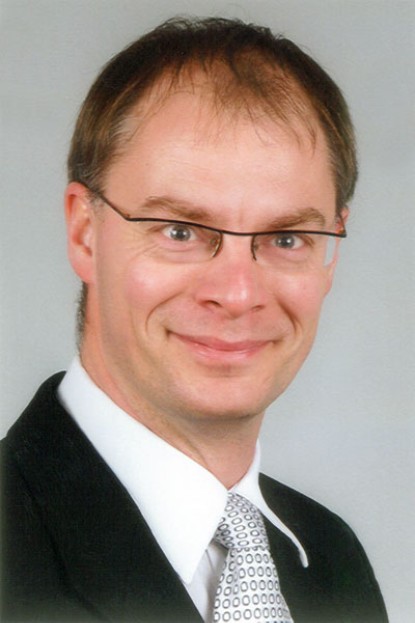Academician N. Victor Zamfir, director of ELI-Nuclear Physics in Romania, TU President Hans Jürgen Prömel, and Physics Department Dean Michael Vogel (left to right) sign the Memorandum of Understanding on the sustained funding of young scientists within the Nuclear Photonics initiative, March 2018.

Za Radnicí 835, Dolní Břežany, 252 41, Czech Republic
ELI Beamlines is a part of the ELI (Extreme Light Infrastructure) pan-European project representing a unique tool of support of scientific excellence in Europe. ELI Beamlines aims to operate the world's most intense laser system. With ultra-high power 10 PW and concentrated intensities of up to 1024 W/square cm, we offer our users a unique source of radiation and rays of accelerated particles. These beamlines are enable pioneering research not only in physics and material science, but also in biomedicine and laboratory astrophysics and many other fields.
Str. Reactorului no.30, P.O.BOX MG-6, Bucharest – Magurele, Romania
ELI-NP is going to be the most advanced research facility in the world focusing on the study of photonuclear physics and its applications, comprising a very high intensity laser of two 10 PW ultra-short pulse lasers and the most brilliant tunable gamma-ray beam. This unique experimental combination will enable ELI-NP to tackle a wide range of research topics in fundamental physics, nuclear physics and astrophysics, and also applied research in materials science, management of nuclear materials and life sciences.
Planckstraße 1, 64291 Darmstadt, Germany
The Petawatt High-Energy Laser for Heavy Ion EXperiments (PHELIX) is a versatile laser facility delivering intense laser beams with energies up to 1 kilojoule or likewise powers up to 500 terawatt. PHELIX is a flashlamp-pumped Nd:glass system employing two frontends (fs- and ns-frontend), a pre-amplifier and a main amplifier. It was built in close cooperation with Lawrence Livermore National Laboratory (LLNL) in the US and the Commissariat à l'Energie Atomique (CEA) in France.
c/o Frankfurt Institute for Advanced Studies, Ruth-Moufang-Str. 1, 60438 Frankfurt/Main
The Helmholtz Graduate School for Hadron and Ion Research “HGS-HIRe for FAIR” is funded by the Initiative and Networking Fund of the Helmholtz Association and is a cooperation between
- the GSI Helmholtzzentrum für Schwerionenforschung, Darmstadt,
- the Technical University Darmstadt,
- the Goethe University Frankfurt,
- the Justus Liebig University Giessen,
- the Ruprecht-Karls-University Heidelberg,
- the Johannes Gutenberg-University Mainz,
- and the Frankfurt Institute for Advanced Studies (FIAS).
P. O. Box 90308, Durham, NC 27708, USA
High Intensity Gamma-Ray Source (HIGS) is a Free-Electron Laser (FEL) based Compton backscattering gamma-ray source. The HIGS facility is located on the campus of Duke University and operated by Triangle Universities Nuclear Laboratory (TUNL). Currently, HIGS can produce gamma rays between 2 and 100 MeV with linear and circular polarizations. Total gamma-ray intensities can reach over 1 billion photons/second at some energies with few percent energy resolution. These characteristics make HIGS the world's most intense polarized gamma-ray source.
P.O. Box 1663, Los Alamos, NM 87545, USA
LANSCE is a National User Facility with one of the nation’s most powerful linear accelerators (LINAC). We are unique because of the intensity and energy spectrum of the neutrons our LINAC produces. Our intense pulsed protons are used for proton radiography and to produce the wide energy spectrum of spallation neutrons needed to interrogate various materials—materials that improve safety and security, advance nuclear technology, and have commercial applications.
One Cyclotron Road, Berkeley, CA 94720, USA
The Berkeley Lab Laser Accelerator (BELLA) Center focuses on the development and application of laser-plasma accelerators (LPAs). LPAs produce ultrahigh accelerating fields (1-100 GV/m) and may provide a compact technology for a variety of applications that include accelerators for high energy physics and drivers for high energy photon sources.
7000 East Avenue, Livermore, CA 94550, USA
NIF & Photon Science is a principal directorate of Lawrence Livermore National Laboratory (LLNL) in Livermore, California. The directorate operates the National Ignition Facility (NIF), the world’s largest and highest-energy laser.
ZIP code 678-1205, 1-1-2, Koto, Kamigori-cho, Ako-gun, Hyogo, Japan
Laboratory of Advanced Science and Technology for Industry (LASTI) at University of Hyogo was established in April 1, 1994. In this laboratory we intend to promote advanced research and development of synchrotron light source and its application, and support industry by developing advanced technology in collaboration with companies in Hyogo prefecture and also near this area. In order to materialize this mission 1.5 GeV synchrotron light source facility, named NewSUBARU, was constructed in 1998.


